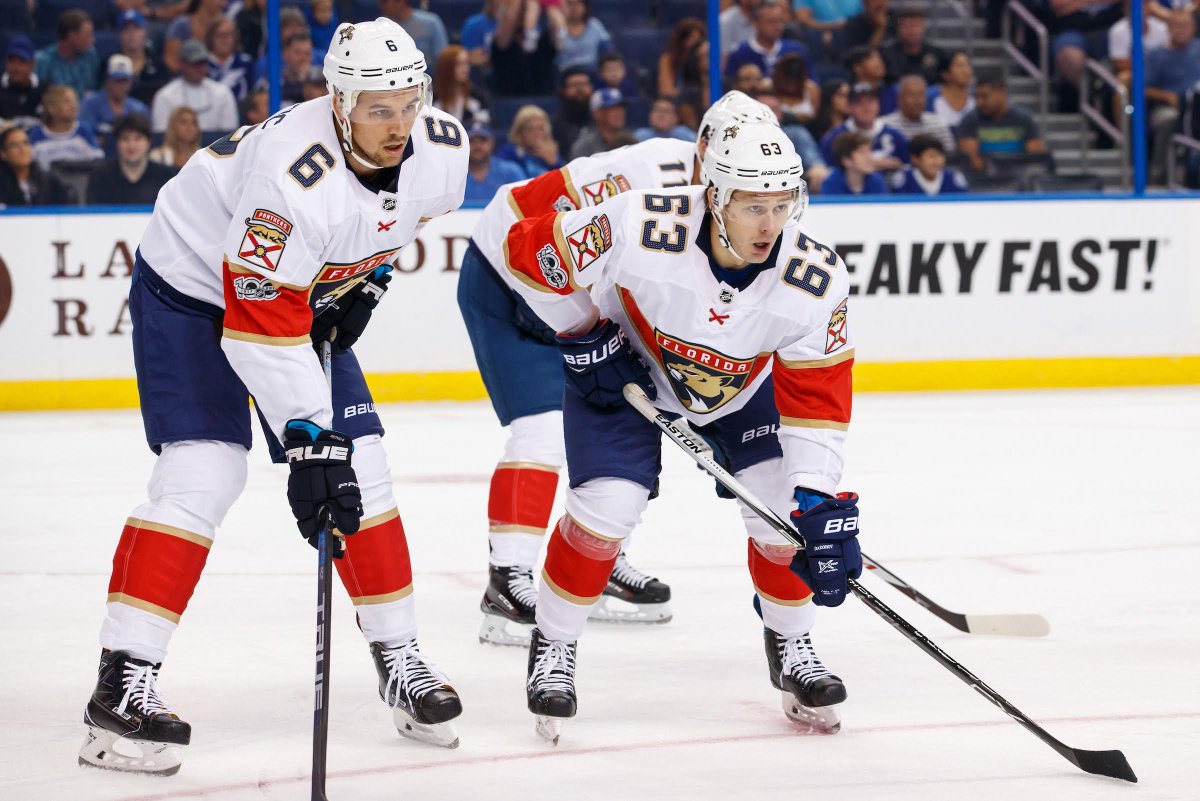The Importance of Cap Space in the NHL
Is there a pattern of where teams spent cap space to succeed?
Heading into the Playoffs, there are dominant teams from the regular season that stand a chance to host the Stanley Cup, and there are underdogs. Those teams labeled as dominant got there because of the skill of the players, both offensively and defensively. Just as in the NBA and NFL, there is a Salary Cap to limit the amount of money a team can spend to build a championship caliber team.
For the 2021-22 seasons, the teams’ ceiling for cap space was set at $81.5 million, and for any given team, they have their star(s) who get paid more than most in the league, such as Connor McDavid or Sergei Bobrovsky. So, how do NHL teams balance their positions based on their salary to push for the Stanley Cup?
Through the NHL standings and from data on Capfriendly.com, the effectiveness of how a team spent their cap space this season in relation to their current placement going into the 2022 Stanley Cup Playoffs can be insight for teams that missed the playoffs and how they may mimic next season to be more successful. Through the comparison of the average percentage spent on each position, the trends start to show which way a franchise leans to aim at the goal of winning the Stanley Cup. There are references to whether teams spent a higher, average, or low percentage on each position to determine the patterns of cap usage. The teams being used are the three leading the league heading into the post-season.
Visuals to Cap Usage:




NOTE: This scatter plot shows the defensive cap percentage against the offensive cap percentage, with the size of the teams’ bubble size corresponding to the goalie cap space.
- Florida Panthers
![]()
![]()
The Florida Panthers have led the league as a dominant team in every position. They have scored the greatest number of goals out of all teams this season, giving them the best goal differential at +98. General Manager Bill Zito leaned more into going with expensive goalies over forwards or defense, signing Goaltender Sergei Bobrovsky with a $10 million cap hit—the highest of any player on the team. Florida mimics the Tampa Bay Lightning strategy of using a higher cap percentage on their goaltending, which has paid off for Tampa Bay the past two seasons, so there is a pattern that GM Zito saw to build this year’s team to run deep into the playoffs.
- Colorado Avalanche
![]()
![]()
A favorite to win the Stanley Cup the entire season, the Colorado Avalanche have sat in this position previous years. They are currently sitting right behind the Florida Panthers for leading the league, which may be a good thing. General Manager Joe Sakic took a pathway not used by many other teams. This data shows that GM Sakic is leading the charge of leaning more into investing in the defensive players, the only other playoff team spending a high percentage of their cap space percentage on defense is the Minnesota Wild. The Avalanche have some of the best players in the league in Nathan MacKinnon, Mikko Rantanen, and Cale Makar to name a few.
- Carolina Hurricanes
![]()
![]()
Making one of the most talked about offers during the off-season, the Carolina Hurricanes sit on the higher end of the cap percentage used on forwards by any team. Extending an offer sheet to former Montreal Canadien Jesperi Kokaniemi in the offseason, General Manager Don Waddell added $6.1 million to the Forward position cap space used. The 62.3% of the total cap space used on forwards by the team rivals the amount of cap space used on forwards by the Toronto Maple Leafs. The total amount of money the Hurricanes have spent on forwards, $52.6 million, is eight-fold the amount spent on all three of their goalies combined.
While there is no ‘simple’ pattern that any of these teams followed, they are focused on different aspects of the game. The Panthers focused more on their goaltending need, putting trust in Rookie Spencer Knight to back up the second highest paid goaltender in Sergei Bobrovsky. The Colorado Avalanche had an above average cap percentage used on defense, with $20 million spent on three defensemen to hold down the blueline. The Carolina Hurricanes led the way with spending an above average amount on forwards, shelling out a significant amount to keep a hold of a young grouping of forwards that aim to win the Hurricanes their first Stanley Cup since the 2006 season. With there being no common pattern, are the performances based solely on luck? These three teams have found success from three different strategies.

